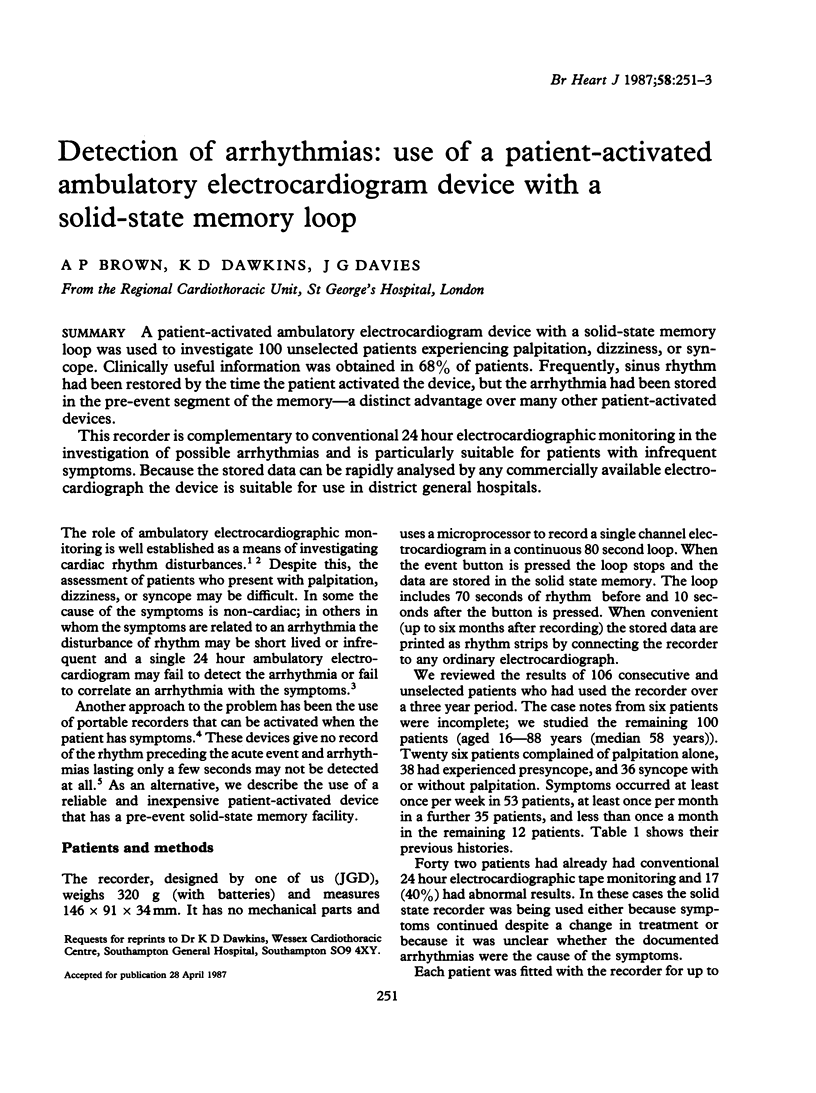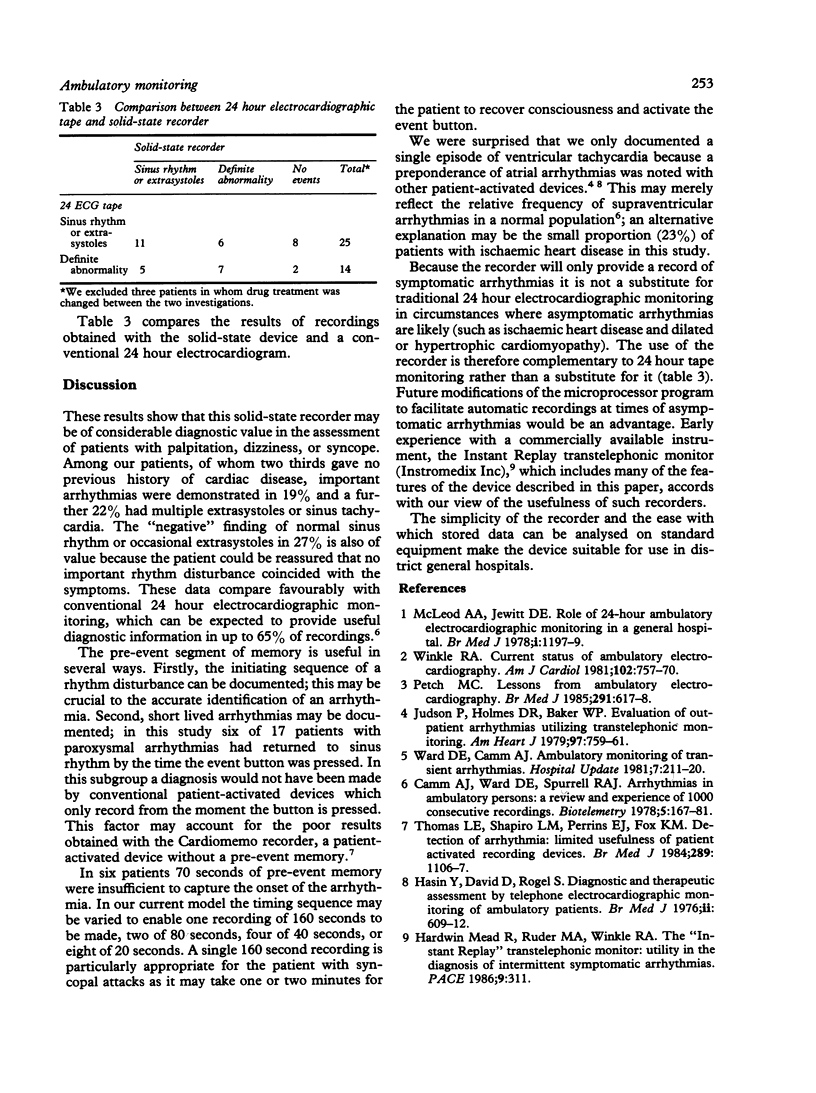Abstract
A patient-activated ambulatory electrocardiogram device with a solid-state memory loop was used to investigate 100 unselected patients experiencing palpitation, dizziness, or syncope. Clinically useful information was obtained in 68% of patients. Frequently, sinus rhythm had been restored by the time the patient activated the device, but the arrhythmia had been stored in the pre-event segment of the memory--a distinct advantage over many other patient-activated devices. This recorder is complementary to conventional 24 hour electrocardiographic monitoring in the investigation of possible arrhythmias and is particularly suitable for patients with infrequent symptoms. Because the stored data can be rapidly analysed by any commercially available electrocardiograph the device is suitable for use in district general hospitals.
Full text
PDF


Images in this article
Selected References
These references are in PubMed. This may not be the complete list of references from this article.
- Camm A. J., Ward D. E., Spurrell R. A. Arrhythmias in ambulatory persons. A review and experience of 1,000 consecutive recordings. Biotelem Patient Monit. 1978;5(4):167–181. [PubMed] [Google Scholar]
- Hasin Y., David D., Rogel S. Diagnostic and therapeutic assessment by telephone electrocardiographic monitoring of ambulatory patients. Br Med J. 1976 Sep 11;2(6036):609–612. doi: 10.1136/bmj.2.6036.609. [DOI] [PMC free article] [PubMed] [Google Scholar]
- Judson P., Holmes D. R., Baker W. P. Evaluation of outpatient arrhythmias utilizing transtelephonic monitoring. Am Heart J. 1979 Jun;97(6):759–761. doi: 10.1016/0002-8703(79)90011-5. [DOI] [PubMed] [Google Scholar]
- McLeod A. A., Jewitt D. E. Role of 24-hour ambulatory electrocardiographic monitoring in a general hospital. Br Med J. 1978 May 6;1(6121):1197–1199. doi: 10.1136/bmj.1.6121.1197. [DOI] [PMC free article] [PubMed] [Google Scholar]
- Petch M. C. Lessons from ambulatory electrocardiography. Br Med J (Clin Res Ed) 1985 Sep 7;291(6496):617–618. doi: 10.1136/bmj.291.6496.617. [DOI] [PMC free article] [PubMed] [Google Scholar]
- Thomas L. E., Shapiro L. M., Perrins E. J., Fox K. M. Detection of arrhythmia: limited usefulness of patient activated recording devices. Br Med J (Clin Res Ed) 1984 Oct 27;289(6452):1106–1107. doi: 10.1136/bmj.289.6452.1106. [DOI] [PMC free article] [PubMed] [Google Scholar]
- Winkle R. A. Current status of ambulatory electrocardiography. Am Heart J. 1981 Oct;102(4):757–770. doi: 10.1016/0002-8703(81)90103-4. [DOI] [PubMed] [Google Scholar]



